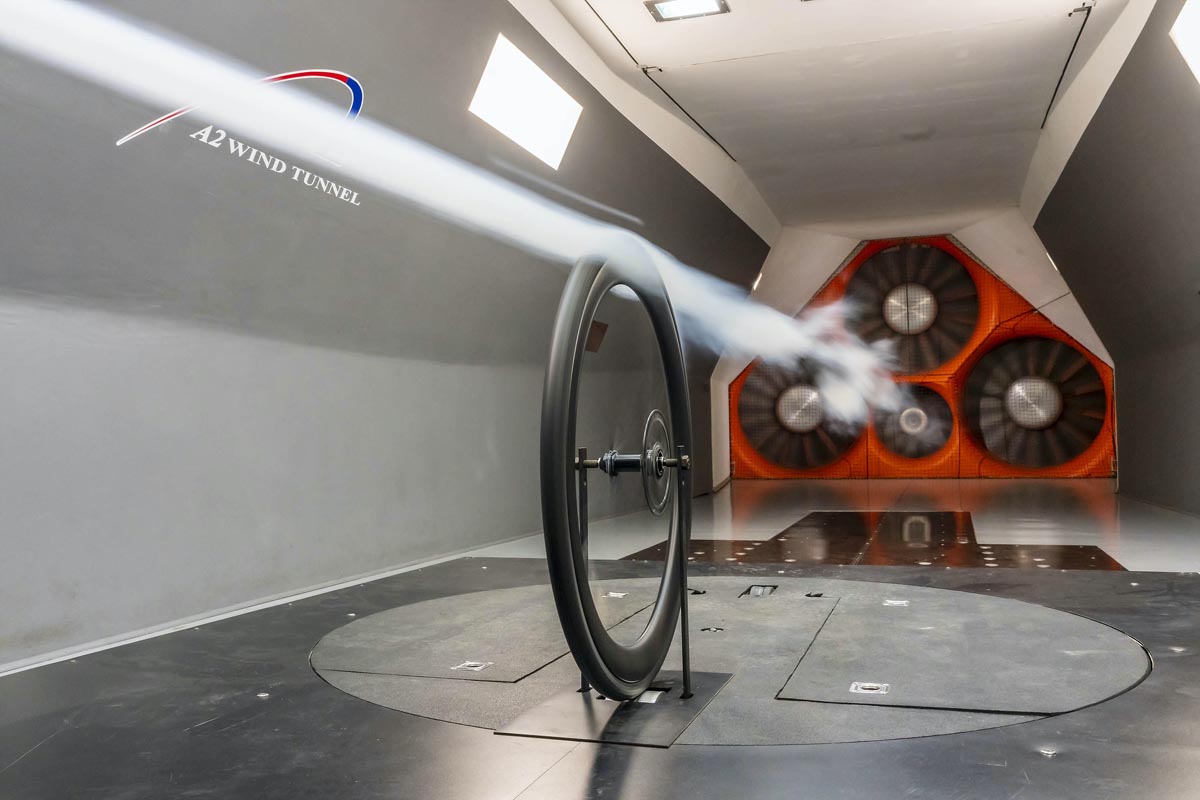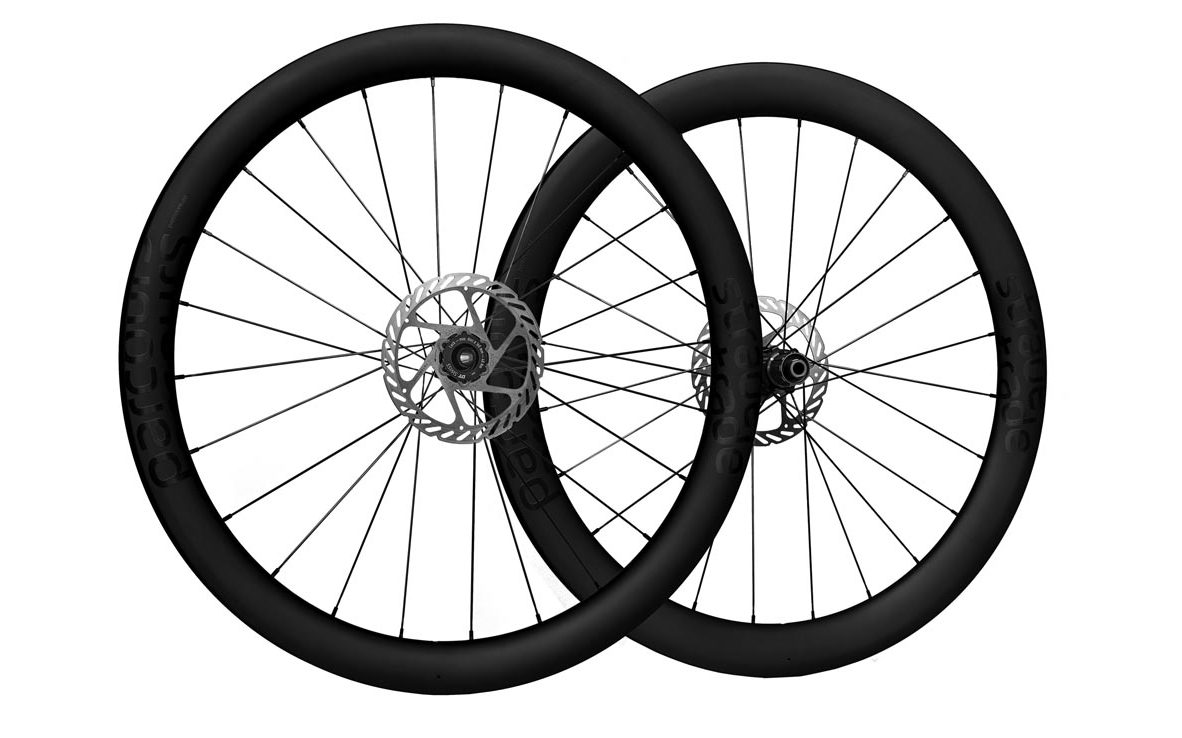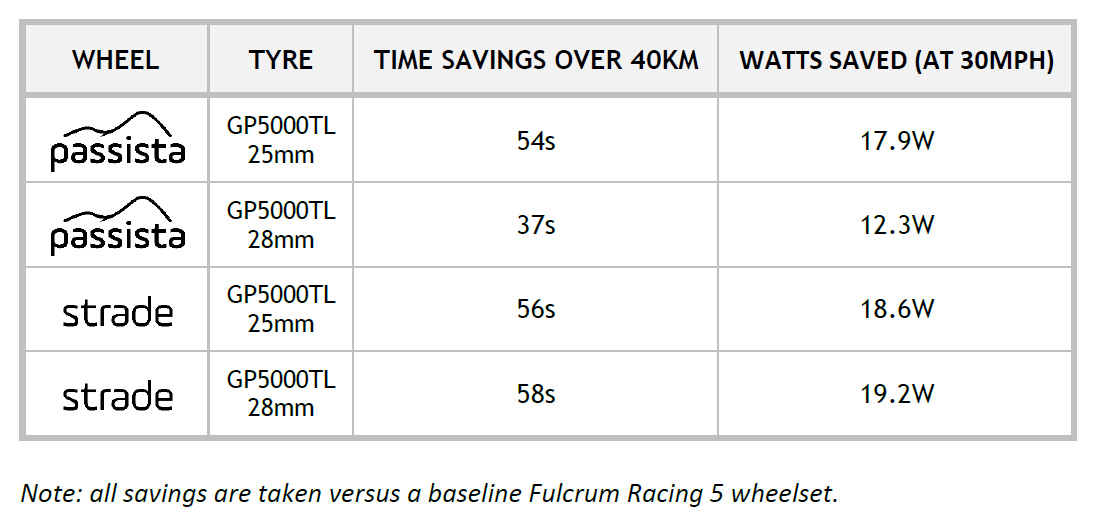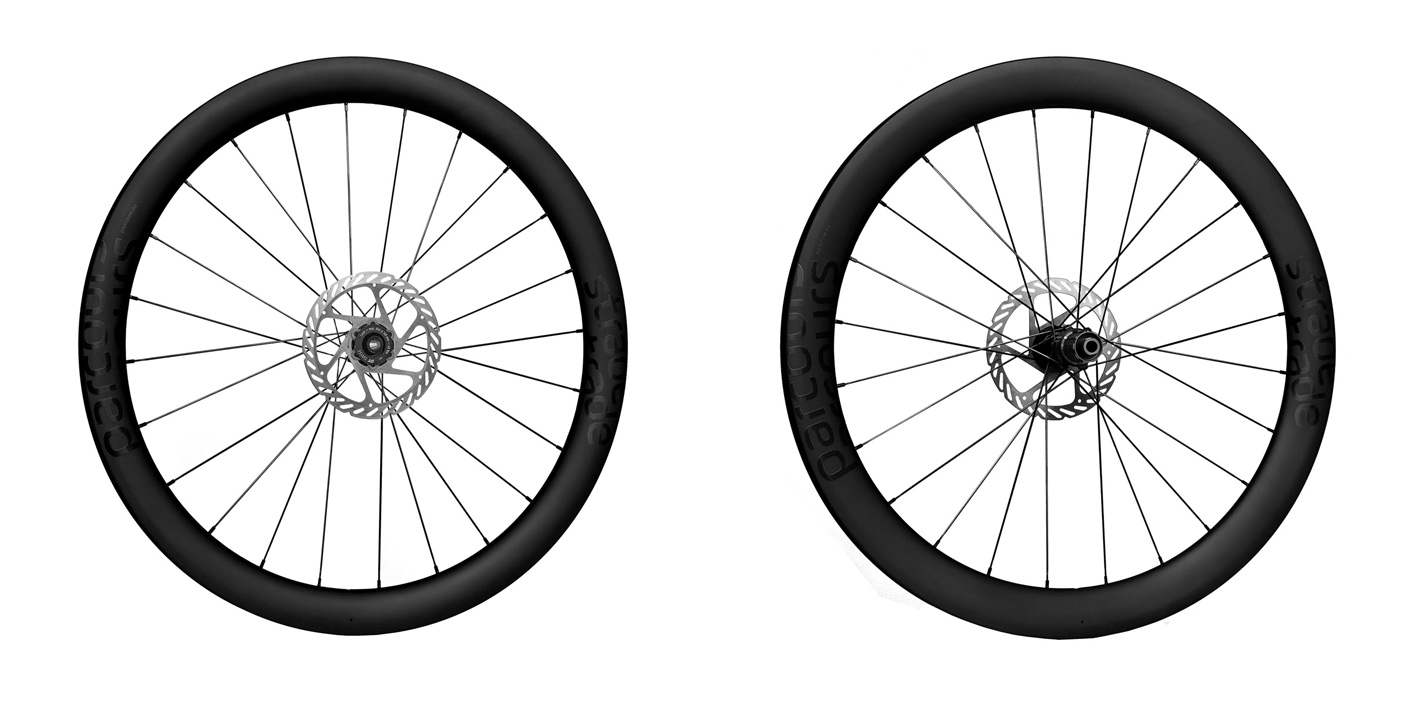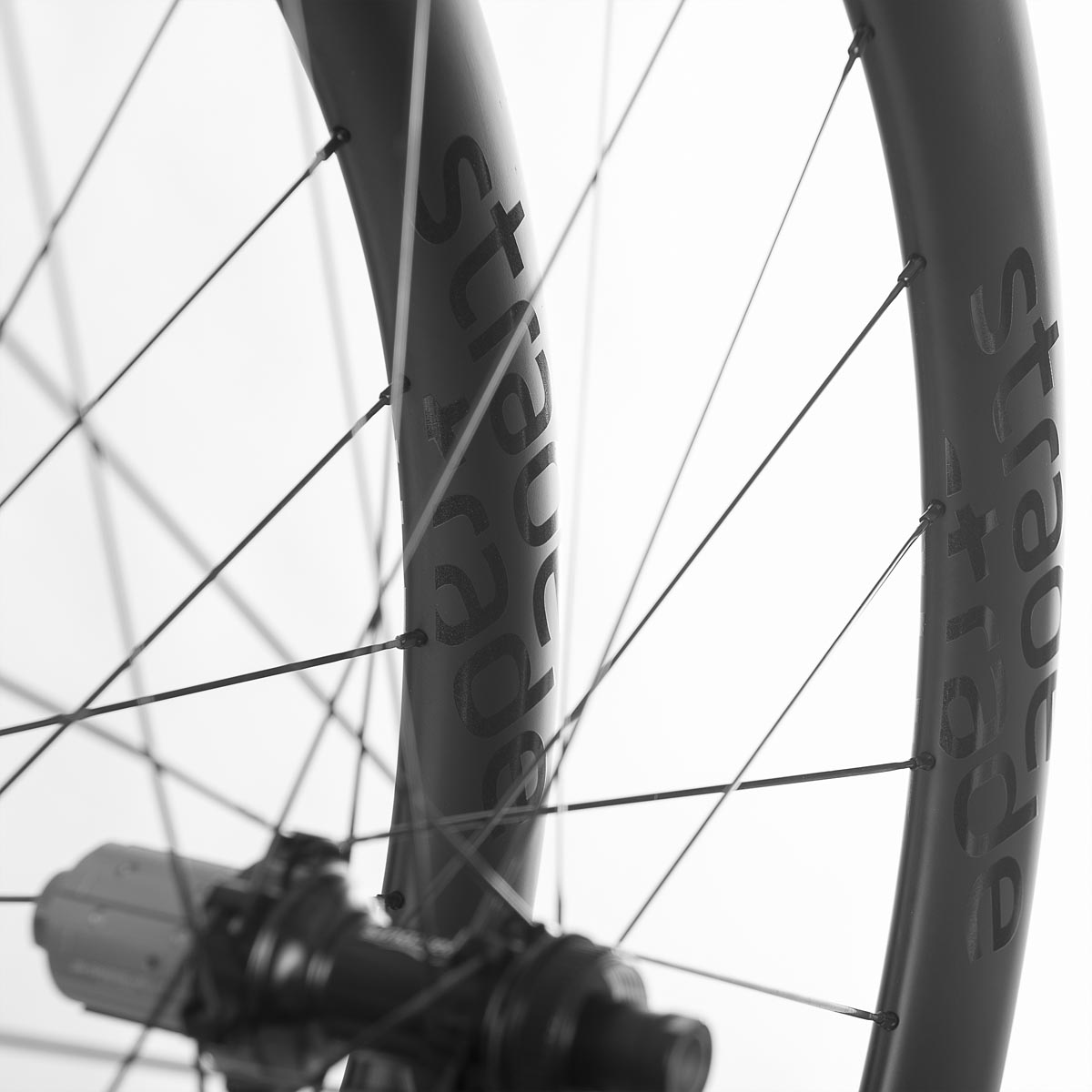Maybe you’ve been considering running larger tires on your road bike. But what about those aerodynamics, right? Surely larger tires will be slower than smaller ones, at least in terms of aerodynamic drag? Maybe not – though it looks like a lot of that depends on the design of your wheels.
The Strade is the newest wheelset from Parcours who are based out of the UK. Parcours offers a number of different wheels, but the Strade was purposely developed to provide optimal aerodynamics with a 28mm tire.
What does that mean? Well, over the span of 12 months working with Nottingham Trent University, Parcours took the design of the Strade from CFD iterations to the wind tunnel. Their findings led them to a different design front and rear with an external width of 32mm up front and just 30.5mm out back (even though both have an internal width of 22.5mm). The wheels also have different depths with 49mm up front and 54mm out back.
According to their white paper, not only was the Strade Disc faster in the wind tunnel when compared with their 56mm deep Passista Rim Brake wheelset, but the Strada fitted with 28mm tires was the fastest overall. That should mean that not only are you getting the best set up in terms of aerodynamics, you should be getting a better ride quality as well, possibly with lower rolling resistance depending on the selected tires.
Even more impressive, is that Parcours has done all of this testing and development, while keeping the price for a carbon wheelset down to just £999 (roughly $1,234).
That includes their own alloy straight pull hub with EZO cartridge bearings and centerlock rotor mounts. Each wheel is built with 24 Sapim CX-Ray spokes with external nipples.
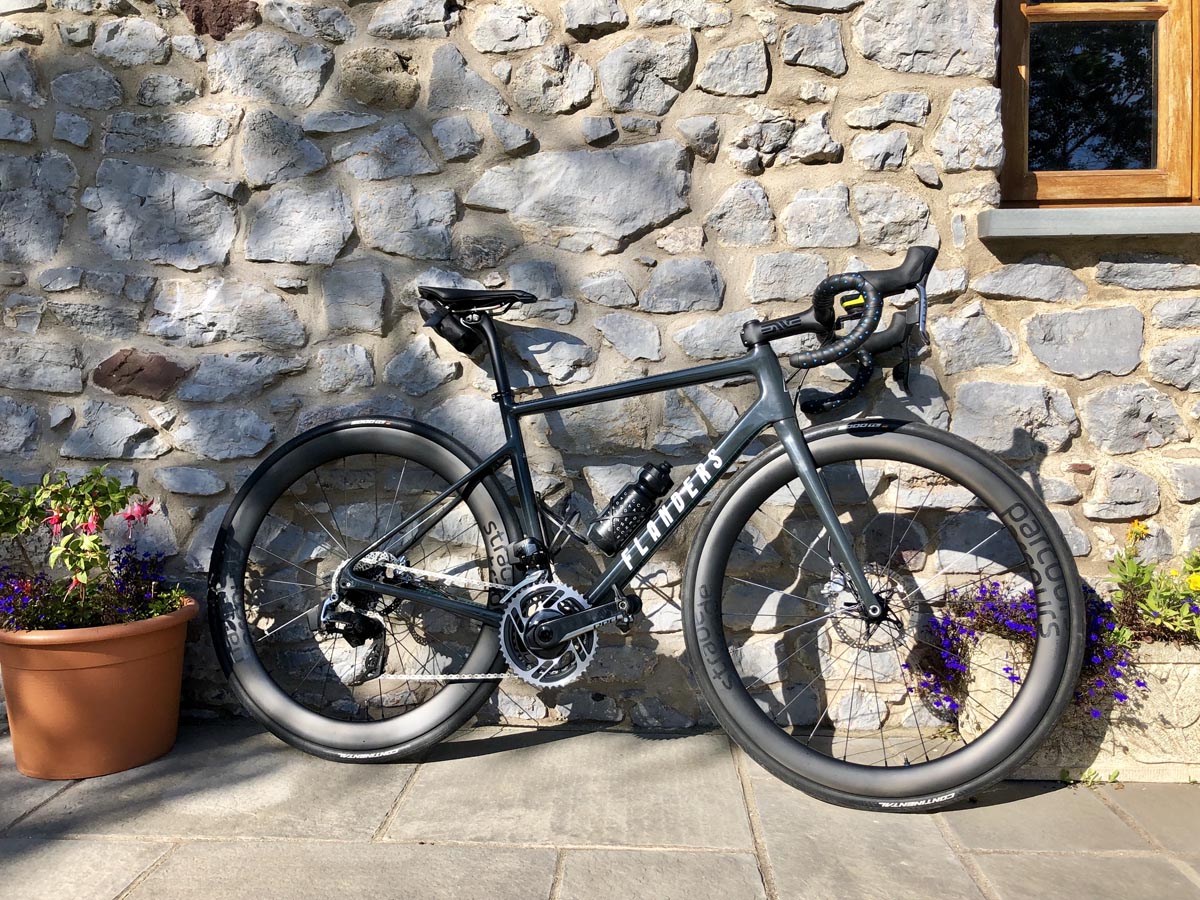
Out of the box, the rims come pre-taped and are tubeless ready, while the hubs are set up with Shimano/SRAM 11 speed freehubs, and 12mm thru axles front and rear with additional adapter kits and freehubs available. Claimed weight is 1,520g for the set, and orders placed now should start shipping in the middle of this month.
